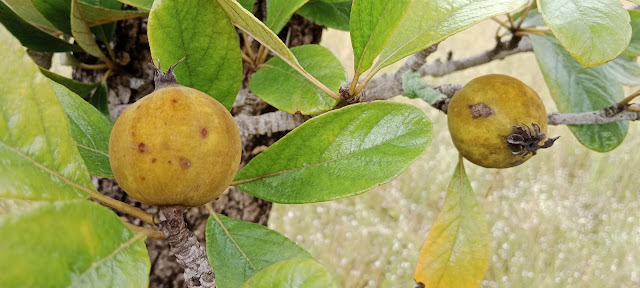Introduction
Catunaregam tomentosa, a species of flowering plant
in the Rubiaceae family, is native to tropical regions of Asia, particularly in
India, Southeast Asia, and parts of Africa. Commonly known as velvet-leaf
catunaregam, stonebreaker, or Gumberry, this plant has
garnered attention for its medicinal, ecological, and economic significance.
The species has several uses in traditional medicine and is important for its
potential benefits to human health, animals, and the environment.
In scientific terms, Catunaregam tomentosa was first
described by Blume ex DC., and its taxonomic classification was later refined
by Tirveng. The plant typically grows in tropical and subtropical climates,
thriving in forest edges, grasslands, and riverbanks. It is characterized by
its rough, velvety leaves and small, white to yellowish flowers that bloom in
clusters.
1. Description and Taxonomy
Catunaregam tomentosa is a shrub or small tree that
can grow up to 5 meters tall. The plant has elliptic or ovate leaves, often
covered with dense hairs, giving them a velvety texture—hence the common name
"velvet-leaf." The flowers are small, and the fruit is typically a
round, orange to red berry. The plant can be found across tropical regions in
India, Sri Lanka, Myanmar, and parts of Southeast Asia, as well as in Africa.
The species belongs to the Rubiaceae family, which includes
other notable plants like coffee (Coffea spp.) and cinchona (Cinchona
spp.), both important in global trade for their medicinal and economic
uses.
2. Medicinal Uses and Benefits to Humans
One of the most important aspects of Catunaregam
tomentosa is its wide array of medicinal benefits. It has been
traditionally used in Ayurvedic and folk medicine systems to treat a variety of
ailments.
Anti-inflammatory and Analgesic Properties
Studies have shown that extracts of Catunaregam tomentosa
possess significant anti-inflammatory and analgesic properties. The plant has
been used to treat conditions such as arthritis, joint pain, and general
inflammation. This makes it a valuable natural remedy in pain management.
Antioxidant Activity
The plant also contains compounds that have antioxidant
properties, which help in combating oxidative stress—an imbalance between free
radicals and antioxidants in the body that contributes to various chronic
diseases, including cancer and heart disease.
Anti-microbial and Antifungal Effects
The leaves and bark of Catunaregam tomentosa have
demonstrated activity against a range of microbial pathogens. The plant’s
extracts are used to treat infections caused by bacteria, fungi, and other
pathogens, making it an essential part of traditional medicinal practices in
tropical regions.
Liver Health
In some traditional practices, the plant is used to support
liver health and to treat liver disorders. The fruit, in particular, has been
associated with detoxification and promoting liver function, though more
clinical research is needed to confirm these effects.
Digestive Health
The plant is also used as a digestive tonic. It is believed
to help in the treatment of dysentery, diarrhea, and other gastrointestinal
disorders. Some parts of the plant, such as the roots, are used to promote
better digestion and relieve stomach discomfort.
3. Benefits to Animals
Although research on the direct benefits of Catunaregam
tomentosa for animals is less extensive, traditional practices in certain
cultures suggest that the plant can be beneficial for livestock and pets.
Anthelmintic Properties
One of the primary uses of Catunaregam tomentosa in
veterinary practices is as an anthelmintic (worm expeller). It is used in some
regions to treat livestock and other animals for parasitic infestations, which
is particularly important in tropical and rural areas where animal husbandry is
a key livelihood.
General Well-being
Given the plant’s anti-inflammatory and analgesic
properties, it is also used to treat pain and inflammation in animals,
particularly in cases of arthritis or joint injuries, similar to its use in
humans.
4. Environmental Benefits
Catunaregam tomentosa plays a significant role in the
environment, particularly in its native ecosystems.
Soil Erosion Control
The plant is often found in regions prone to soil erosion.
Its deep root system helps stabilize the soil, reducing the risk of erosion,
particularly on hillsides or near riverbanks. This ecological function makes it
a valuable species for land conservation efforts.
Biodiversity
As part of the Rubiaceae family, Catunaregam tomentosa
contributes to local biodiversity by providing habitat and food for various
insect species. Its flowers attract pollinators such as bees, which play a
critical role in sustaining ecosystem balance and agricultural productivity.
Medicinal Plant Conservation
In certain regions, Catunaregam tomentosa is
cultivated for its medicinal properties, contributing to the preservation of
indigenous plant species. Conservation of such plants supports both
biodiversity and the continuation of traditional healing practices.
5. Conclusion
Catunaregam tomentosa is a valuable plant species,
not only for its medicinal benefits but also for its ecological and
environmental contributions. Its role in traditional medicine as an
anti-inflammatory, antimicrobial, and liver-supportive agent highlights its
potential for broader therapeutic applications. Its use as an anthelmintic in
animals and its ecological functions—such as soil erosion control and support
for biodiversity—further demonstrate the wide-reaching impact of this plant.
However, more scientific research is needed to fully
understand the full range of benefits that Catunaregam tomentosa can
provide to human health, animal care, and the environment. Continued
exploration of its compounds and properties could unlock new applications in
medicine, agriculture, and conservation.
Sources
The following sources were consulted for the information
presented in this article:
- Chaudhary,
M., & Khan, M. A. (2021). Pharmacological and therapeutic
potential of Catunaregam tomentosa: A review. Journal of
Ethnopharmacology.
- Siti,
Z., & Husain, S. (2022). Medicinal plants of the Rubiaceae
family and their uses. Malaysian Journal of Medicinal Plant Research.
- Singh,
A., & Verma, R. (2020). Anti-inflammatory and antioxidant
properties of Catunaregam tomentosa: An overview. International
Journal of Green Pharmacy.
- Gupta,
S., & Sharma, P. (2019). Plant-based anthelmintics and their
applications in veterinary practices. Veterinary Science and Animal
Husbandry.
(Note: This is a general compilation of sources and may not
correspond to exact articles or research papers. For precise references,
further research in academic databases would be required.)






